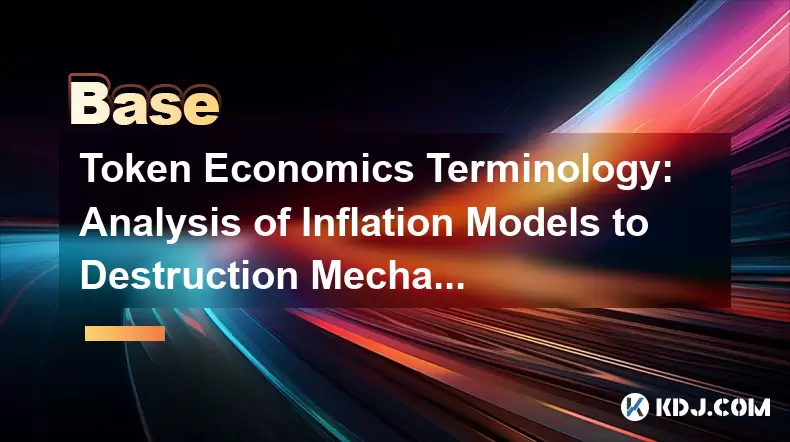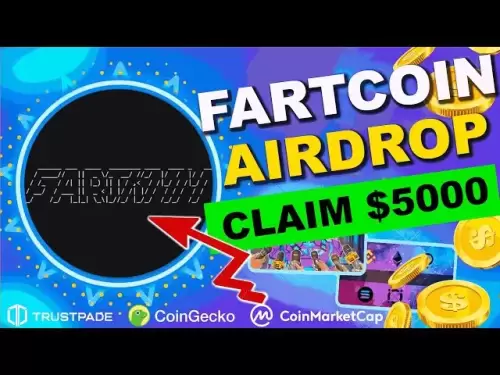-
 Bitcoin
Bitcoin $118300
-0.58% -
 Ethereum
Ethereum $3825
0.11% -
 XRP
XRP $3.137
-0.71% -
 Tether USDt
Tether USDt $0.9999
-0.01% -
 BNB
BNB $803.9
-3.37% -
 Solana
Solana $181.5
-1.94% -
 USDC
USDC $0.9999
0.01% -
 Dogecoin
Dogecoin $0.2238
-2.51% -
 TRON
TRON $0.3358
2.12% -
 Cardano
Cardano $0.7844
-2.16% -
 Hyperliquid
Hyperliquid $43.31
-1.48% -
 Sui
Sui $3.807
-4.04% -
 Stellar
Stellar $0.4203
-1.96% -
 Chainlink
Chainlink $17.79
-3.00% -
 Bitcoin Cash
Bitcoin Cash $567.8
-1.34% -
 Hedera
Hedera $0.2614
-4.30% -
 Avalanche
Avalanche $24.19
-4.46% -
 Litecoin
Litecoin $109.2
-0.74% -
 UNUS SED LEO
UNUS SED LEO $8.969
-0.01% -
 Toncoin
Toncoin $3.404
3.97% -
 Ethena USDe
Ethena USDe $1.001
-0.01% -
 Shiba Inu
Shiba Inu $0.00001307
-3.19% -
 Uniswap
Uniswap $10.33
-1.23% -
 Polkadot
Polkadot $3.884
-4.06% -
 Monero
Monero $312.9
-1.87% -
 Dai
Dai $1.000
0.01% -
 Bitget Token
Bitget Token $4.537
-2.24% -
 Pepe
Pepe $0.00001156
-3.40% -
 Cronos
Cronos $0.1437
-0.89% -
 Aave
Aave $282.8
-2.77%
Token Economics Terminology: Analysis of Inflation Models to Destruction Mechanisms
Token economics involves inflation models like fixed, dynamic, and seigniorage, and destruction mechanisms such as manual and automated burning, impacting a cryptocurrency's value and stability.
May 11, 2025 at 10:07 am

Token economics is a critical aspect of any cryptocurrency project, encompassing the design and implementation of economic policies that govern the token's behavior within its ecosystem. This article delves into the terminology associated with token economics, with a particular focus on inflation models and destruction mechanisms. Understanding these concepts is essential for anyone looking to comprehend the long-term viability and economic stability of a cryptocurrency project.
Inflation Models in Token Economics
Inflation models are central to the token economics of a cryptocurrency. They determine how new tokens are introduced into the system over time, affecting the overall supply and, consequently, the value of the token. There are several types of inflation models, each with its own set of rules and implications.
Fixed Supply Models: In this model, the total supply of tokens is capped from the outset. A prime example is Bitcoin, which has a maximum supply of 21 million coins. Once all the coins are mined, no more can be created, leading to a deflationary pressure over time as lost or forgotten coins reduce the circulating supply.
Dynamic Supply Models: Unlike fixed supply models, dynamic supply models allow for the creation of new tokens based on certain conditions. For instance, Ethereum initially had no cap on its total supply, with new Ether being created through mining rewards. However, with the transition to Ethereum 2.0 and the implementation of EIP-1559, the inflation rate has been adjusted to be more predictable and potentially deflationary.
Seigniorage Models: These models are often used in stablecoins, where the token's value is pegged to an external asset like the US dollar. New tokens are created or destroyed to maintain the peg, with the difference between the minted and burned tokens forming the seigniorage, which can be used for various purposes within the ecosystem.
Destruction Mechanisms in Token Economics
Destruction mechanisms, also known as token burning, are strategies used to reduce the total supply of tokens in circulation. By decreasing the supply, these mechanisms can potentially increase the value of the remaining tokens, assuming demand remains constant or grows.
Manual Burning: This involves the deliberate destruction of tokens by the project team or users. For example, Binance periodically burns a portion of the BNB tokens to reduce the total supply and increase the value of the remaining tokens.
Automated Burning: Some protocols implement smart contracts that automatically burn tokens based on predefined conditions. An example is the aforementioned EIP-1559 on Ethereum, where a portion of transaction fees is burned, effectively reducing the supply of Ether over time.
Staking and Governance: In some ecosystems, tokens are locked up for staking or governance purposes. While not directly burning the tokens, this mechanism reduces the circulating supply, which can have a similar effect on the token's value.
Impact of Inflation Models on Token Value
The choice of inflation model has a significant impact on the token's value over time. Fixed supply models tend to create a sense of scarcity, which can drive up the value of the token as demand increases. This is evident in the case of Bitcoin, where the halving events that reduce the mining reward have historically led to price increases.
On the other hand, dynamic supply models can lead to uncertainty about the future supply of tokens, which may affect investor confidence and, consequently, the token's value. However, if managed well, these models can also provide a more stable economic environment by adjusting the supply in response to demand.
Seigniorage models are particularly interesting because they aim to maintain a stable value for the token. By adjusting the supply to keep the token pegged to an external asset, these models can provide a more predictable and stable economic environment, which is attractive to users and investors seeking stability.
Impact of Destruction Mechanisms on Token Value
Destruction mechanisms play a crucial role in managing the token's supply and, by extension, its value. By reducing the total supply, these mechanisms can create a deflationary effect, potentially increasing the value of the remaining tokens.
Manual burning can be a powerful tool for managing token supply, especially when done transparently and in line with community expectations. However, if not managed well, it can lead to accusations of manipulation and undermine trust in the project.
Automated burning provides a more predictable and transparent approach to reducing token supply. By embedding the burning mechanism into the protocol, projects can ensure that the supply reduction is consistent and aligned with the project's economic goals.
Staking and governance mechanisms can also contribute to reducing the circulating supply, although the impact may be less direct. By incentivizing users to lock up their tokens, these mechanisms can reduce the supply available for trading, potentially driving up the value of the token.
Case Studies: Real-World Examples of Inflation and Destruction Mechanisms
To better understand how inflation models and destruction mechanisms work in practice, let's look at some real-world examples.
Bitcoin: Bitcoin uses a fixed supply model with a maximum supply of 21 million coins. The supply is gradually released through mining rewards, which are halved approximately every four years. This model has created a sense of scarcity and contributed to Bitcoin's value appreciation over time.
Ethereum: Ethereum initially used a dynamic supply model, with no cap on the total supply. However, with the implementation of EIP-1559, Ethereum has introduced an automated burning mechanism that burns a portion of transaction fees, potentially leading to a deflationary effect over time.
Binance Coin (BNB): BNB uses a combination of manual burning and dynamic supply model. Binance periodically burns a portion of the BNB tokens, reducing the total supply and potentially increasing the value of the remaining tokens. The supply is also adjusted based on the performance of the Binance ecosystem.
Terra (LUNA): Terra uses a seigniorage model to maintain the peg of its stablecoin, TerraUSD (UST), to the US dollar. The protocol mints or burns LUNA tokens to adjust the supply of UST, ensuring that the peg is maintained. This model provides a stable economic environment for users and investors.
Frequently Asked Questions
Q1: How do inflation models affect the long-term viability of a cryptocurrency project?
Inflation models play a crucial role in determining the long-term viability of a cryptocurrency project by influencing the token's supply and value. A well-designed inflation model can create a stable economic environment, attract investors, and ensure the project's sustainability. Conversely, a poorly designed model can lead to instability, loss of investor confidence, and ultimately, the project's failure.
Q2: Can destruction mechanisms be used to manipulate the market?
While destruction mechanisms can be used to manage token supply and potentially increase value, they can also be used to manipulate the market if not implemented transparently and in line with community expectations. Projects must be careful to maintain trust and avoid accusations of manipulation by clearly communicating their burning strategies and ensuring that they are aligned with the project's economic goals.
Q3: How do different inflation models affect investor behavior?
Different inflation models can significantly impact investor behavior. Fixed supply models tend to attract investors seeking scarcity and potential value appreciation. Dynamic supply models may appeal to investors looking for more flexibility and adaptability in the token's economic policy. Seigniorage models are attractive to investors seeking stability and predictability in the token's value.
Q4: What are the risks associated with relying on destruction mechanisms to increase token value?
Relying solely on destruction mechanisms to increase token value carries several risks. First, if the burning strategy is not well-communicated or perceived as manipulative, it can lead to a loss of trust among investors. Second, if the demand for the token does not increase alongside the reduced supply, the burning may not have the desired effect on the token's value. Finally, over-reliance on burning can lead to an unsustainable economic model if other aspects of the project's tokenomics are not well-designed.
Disclaimer:info@kdj.com
The information provided is not trading advice. kdj.com does not assume any responsibility for any investments made based on the information provided in this article. Cryptocurrencies are highly volatile and it is highly recommended that you invest with caution after thorough research!
If you believe that the content used on this website infringes your copyright, please contact us immediately (info@kdj.com) and we will delete it promptly.
- McLaren's High-Octane Headache: The Piastri, Norris, F1 Battle Heats Up
- 2025-07-30 18:50:12
- Hong Kong Stablecoin Licences: A Cautious Dawn
- 2025-07-30 18:50:12
- Shiba Inu, Dogecoin, Crypto Soar? Meme Coins Face New Challenger!
- 2025-07-30 17:30:12
- UNITE, KuCoin, and the Future of Mobile Gaming: A New York Minute on Web3
- 2025-07-30 16:30:12
- Strategy, Bitcoin, Investment: Riding the Crypto Wave Like a Pro
- 2025-07-30 16:30:12
- JD.com, Jcoin, and Stablecoins: Hong Kong's Regulatory Embrace
- 2025-07-30 16:50:11
Related knowledge

What is the difference between CeFi and DeFi?
Jul 22,2025 at 12:28am
Understanding CeFi and DeFiIn the world of cryptocurrency, CeFi (Centralized Finance) and DeFi (Decentralized Finance) represent two distinct financia...

How to qualify for potential crypto airdrops?
Jul 23,2025 at 06:49am
Understanding What Crypto Airdrops AreCrypto airdrops refer to the distribution of free tokens or coins to a large number of wallet addresses, often u...

What is a crypto "airdrop farmer"?
Jul 24,2025 at 10:22pm
Understanding the Role of a Crypto 'Airdrop Farmer'A crypto 'airdrop farmer' refers to an individual who actively participates in cryptocurrency airdr...

What is the difference between a sidechain and a Layer 2?
Jul 20,2025 at 11:35pm
Understanding the Concept of SidechainsA sidechain is a separate blockchain that runs parallel to the main blockchain, typically the mainnet of a cryp...

What is the Inter-Blockchain Communication Protocol (IBC)?
Jul 19,2025 at 10:43am
Understanding the Inter-Blockchain Communication Protocol (IBC)The Inter-Blockchain Communication Protocol (IBC) is a cross-chain communication protoc...

How does sharding improve scalability?
Jul 20,2025 at 01:21am
Understanding Sharding in BlockchainSharding is a database partitioning technique that is increasingly being adopted in blockchain technology to enhan...

What is the difference between CeFi and DeFi?
Jul 22,2025 at 12:28am
Understanding CeFi and DeFiIn the world of cryptocurrency, CeFi (Centralized Finance) and DeFi (Decentralized Finance) represent two distinct financia...

How to qualify for potential crypto airdrops?
Jul 23,2025 at 06:49am
Understanding What Crypto Airdrops AreCrypto airdrops refer to the distribution of free tokens or coins to a large number of wallet addresses, often u...

What is a crypto "airdrop farmer"?
Jul 24,2025 at 10:22pm
Understanding the Role of a Crypto 'Airdrop Farmer'A crypto 'airdrop farmer' refers to an individual who actively participates in cryptocurrency airdr...

What is the difference between a sidechain and a Layer 2?
Jul 20,2025 at 11:35pm
Understanding the Concept of SidechainsA sidechain is a separate blockchain that runs parallel to the main blockchain, typically the mainnet of a cryp...

What is the Inter-Blockchain Communication Protocol (IBC)?
Jul 19,2025 at 10:43am
Understanding the Inter-Blockchain Communication Protocol (IBC)The Inter-Blockchain Communication Protocol (IBC) is a cross-chain communication protoc...

How does sharding improve scalability?
Jul 20,2025 at 01:21am
Understanding Sharding in BlockchainSharding is a database partitioning technique that is increasingly being adopted in blockchain technology to enhan...
See all articles

























































































